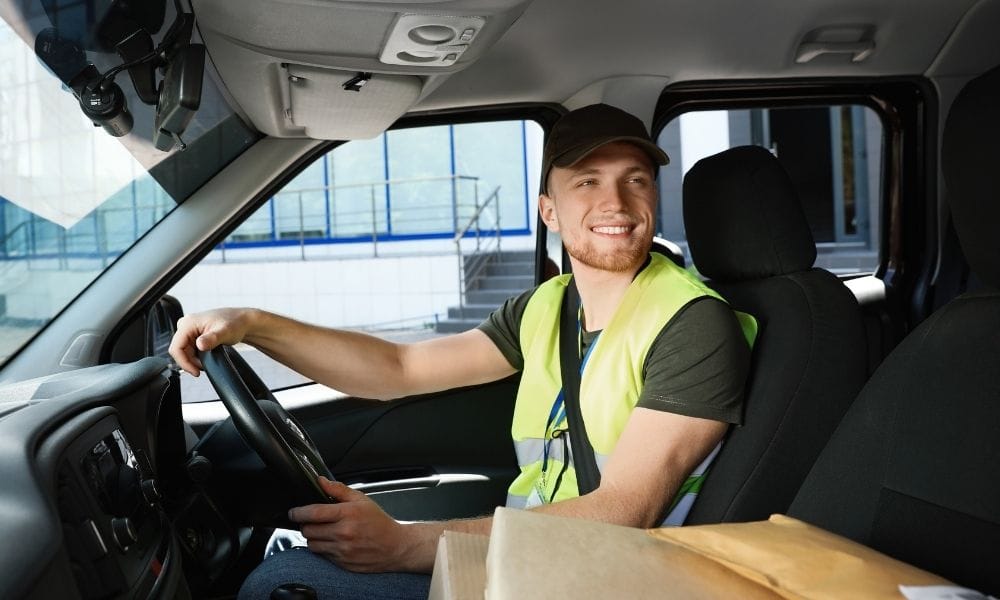
Business fleets of all sizes should have appropriate policies and procedures in place to manage the risks faced by employees who drive for work. Such policies and procedures are generally considered essential in order to fulfil obligations as set out in legislation such as the Health & Safety at Work Act.
More importantly, their function should be to support the safety and wellbeing of the employee, by helping to minimise the risk of their becoming involved in a collision while driving for work. However detailed and far-reaching the policy, in practical terms, this function can only be achieved if it promotes the development of the kind of attitudes and skills that lead to less risky behaviour by drivers.
On 25 November, as part of a series of webinars presented by Safety & Health Practitioner magazine, Tony Greenidge, IAM RoadSmart’s CEO, joined a small group of industry experts to discuss this issue and to offer advice for employers on how to engage with drivers in a way that has a positive effect on their road safety.
Additional challenges from COVID-19
This year’s lockdown periods may have shifted the focus towards the output of key workers, especially in the supply chain, and away from the procedures they ought to follow to remain safe on the roads. There is a danger that heavier workloads have led to increased pressure on drivers and, in turn, negative effects on their behaviour at the wheel.
Tony said: “Our experience is that individual driver attitude and behaviours are much improved when it forms part of a wider health and safety strategy within a business. The culture, I think, of the business is also really important here. For example, if drivers feel that they’re only measured by the outcome – did they fix the customer’s problem, did they make that sale, or achieve the specific purpose of that journey or that meeting – both the driver and/or the employer may not pay sufficient attention to the journey that actually got them there”.
Dr Karen McDonald of RoSPA echoed this, highlighting the need for a focus on human elements of risk management.

“From a RoSPA perspective [we] very much endorse the ‘big picture’ approach. Our vision of lives free from serious accidental injury is underpinned by our work in road safety, which we see as a life course topic… the importance of being situationally aware, and the ability to undertake risk assessment at each stage of your life is so fundamentally important”.
In relation to the effects of COVID-19 on UK workers, Dr McDonald said: “As many as two thirds of vehicles we’re unused in the first couple of months of lockdown, so the shift to home working [and] the essential journeys only, in our opinion has led to some form of deskilling”.
“I was reading about these ‘robust checks by technically competent people, to ensure optimum performance’ but that was all to do with the vehicles. I think this conversation has certainly identified that we need robust checks by technically competent people to assess driver health”.
The effects of stress and fatigue
This year’s lockdowns have created a period of increased pressure on those working in the UK’s supply chain, highlighting the need for employers to acknowledge the potential knock-on effects of fatigue and stress, which can be the cause of unsafe behaviours in all kinds of tasks, driving included. Marcus de Guingand from Third Pillar of Health, shared some fascinating findings from research into the effects of fatigue on workers’ performance and the incidence of workplace injuries.
“38% of workers have had an accident or near miss during their commute due to drowsiness, just under 1% of workers have been off work because of an accident due to drowsiness…63% of drivers have been drowsy during their commute at least a few times a month in the last year”.
“Driver fatigue is a very real risk for road safety”, said Marcus. “It may be well hidden, and organisations really do need to take it seriously. What we’ve found in other industries, notably construction, is that fatigue was the trigger for incidents, accidents and injuries”.
Learnings for fleets of all sizes
In the webinar, Hazel McGuinness, SHE Advisor for Royal Mail group, outlined some of strategies adopted across their 45,000-strong vehicle fleet to deal with the challenges. Royal Mail’s fleet is exceptionally large, and businesses with fewer drivers and vehicles may benefit from taking a more focused, personal approach to dealing with drivers’ concerns, but can certainly learn from the strategies adopted by Royal Mail, particularly when it comes to vetting new drivers.
Hazel said: “We do have quite a strict criteria for agency staff coming into Royal Mail, especially for the drivers… about their licence status, we want to understand what their driving experience is, their collision background etc, tachograph infringements… over and above the code of practice we have with the agencies we also do our own checks on arrival”.

Hazel also outlined some of the strategies adopted for driver training while in-cab training for groups of drivers was rendered impossible by social distancing measures, such as training drivers in smaller groups and using screen-based education.
At IAM RoadSmart, our recent developments in e-learning and online risk management tools have allowed us to help our clients to implement a similar approach. As Tony went on to point out: “There are a raft of e-learning and on-road training interventions out there, and they all help to build that risk profile of a driver, but really, taking this data and then doing something with it is the real key to making a positive difference… the example we’ve just heard from Royal Mail shows the number of things they’re doing to try and bring that data to life and direct them as to what they should be doing next as a business, and right down to the individual drivers, and I think that’s key.”
Don’t worry if you missed the webinar – follow the link to sign up to SHP’s ‘Webinar Wednesdays’ and view a recording.


